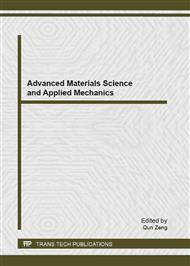p.15
p.20
p.23
p.27
p.31
p.37
p.44
p.51
p.56
An Experimental Study on the Performance of Fixed-End Supported PFRP Channel Beams under Flexure
Abstract:
The experimental investigation on the fixed-end supported PFRP channel beams subjected to three-point loading is presented. The objectives of this study are to evaluate the effects of the span on the structural behaviors, the critical buckling loads and the modes of failure of the PFRP beams, and to compare the obtained deflections with those obtained from the Timoshenko’s shear deformation beam theory equation in order to check the adequacy of the equation. The beam specimens have the cross-sectional dimensions of 152 43 10 mm with span-to-depth ratio ranging from 16 to 33. A total of twenty-two specimens were performed. Based on the experimental results, it was found that the loads versus mid-span vertical deflection relationships of the beam specimens are linear up to the failure, but the load versus mid-span lateral deflection relationships are geometrically nonlinear. The general modes of failure are the flexural-torsional buckling. Finally, the Timoshenko’s shear deformation beam equation can satisfactorily predict the vertical deflection of the beams within acceptable engineering error.
Info:
Periodical:
Pages:
31-36
Citation:
Online since:
May 2013
Authors:
Price:
Сopyright:
© 2013 Trans Tech Publications Ltd. All Rights Reserved
Share:
Citation:


